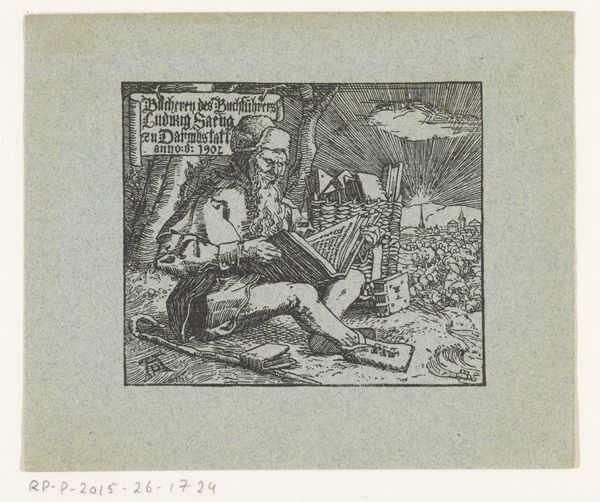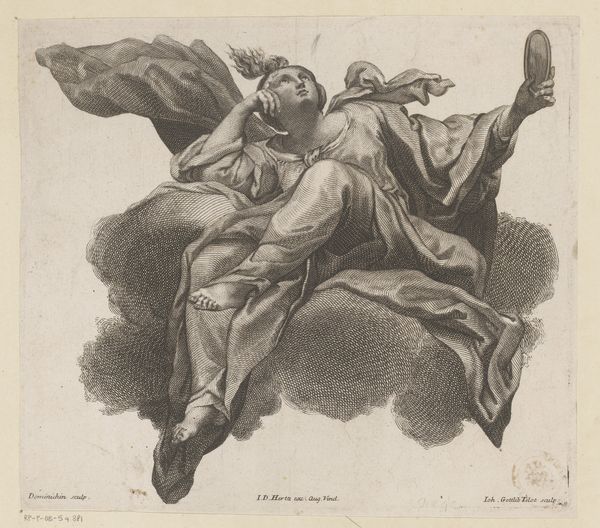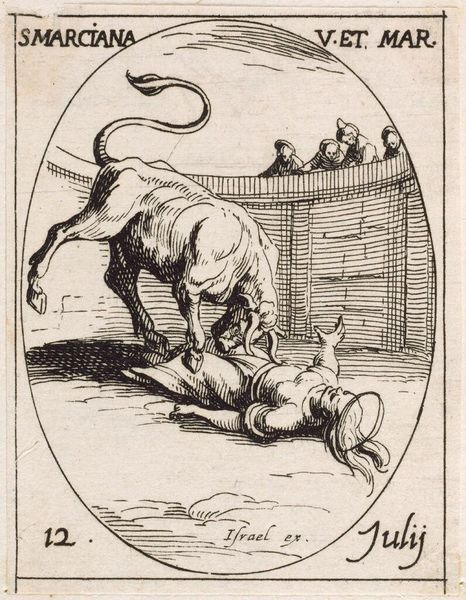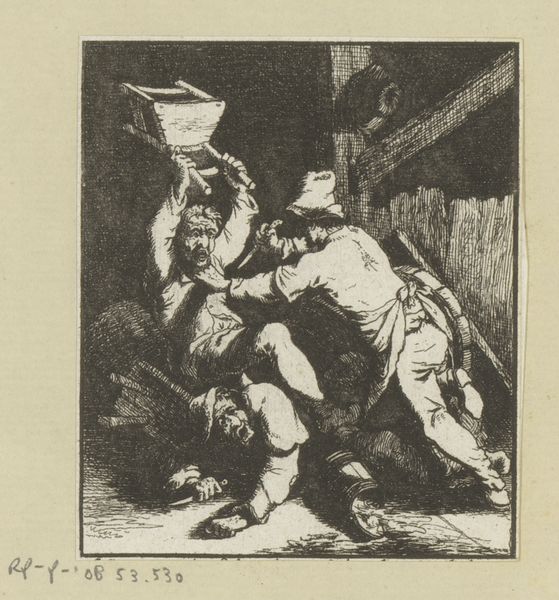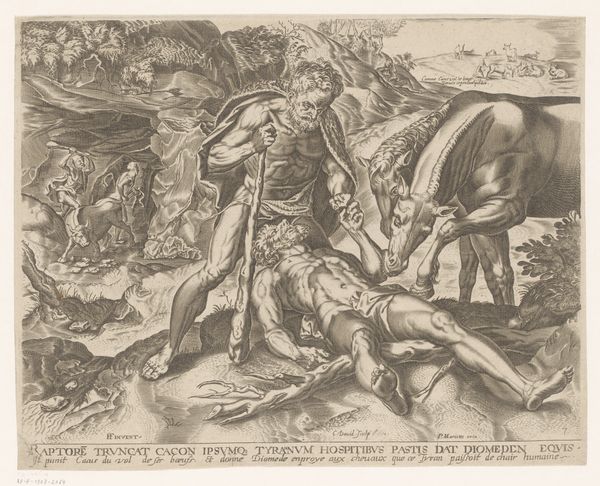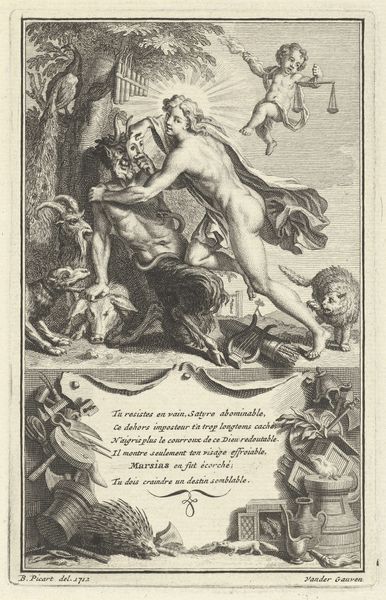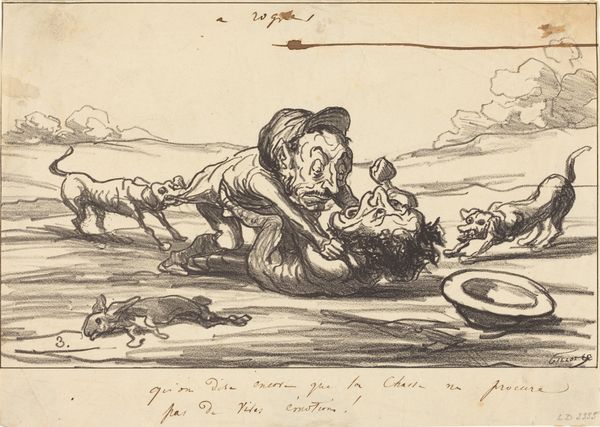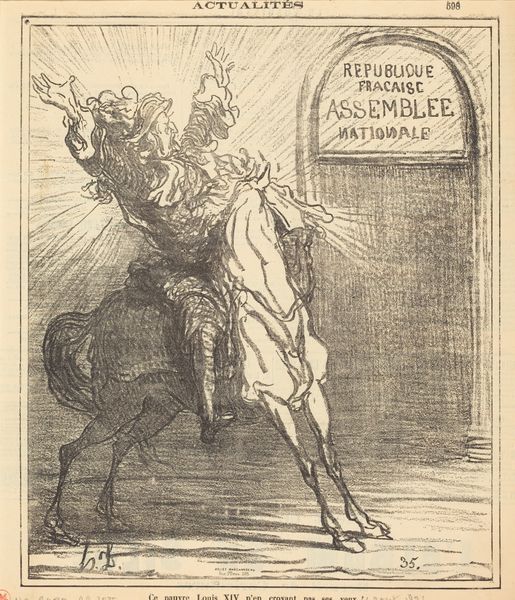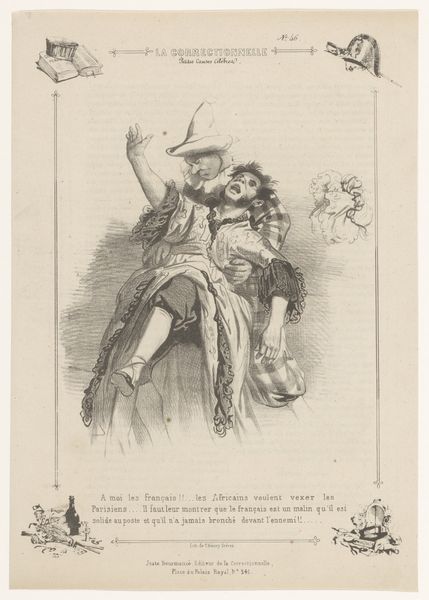
print, engraving
#
narrative-art
#
baroque
# print
#
figuration
#
line
#
history-painting
#
engraving
Dimensions: height 92 mm, width 127 mm
Copyright: Rijks Museum: Open Domain
Giovanni Battista Coriolano made this print, "Jaël doodt Sisera," sometime in the early to mid-17th century, using woodcut. This is a relief printing technique, meaning that Coriolano carved away the areas he didn't want to print, leaving the design raised on the block's surface. Take a close look, and you’ll notice a tremendous amount of handwork went into this image. Cutting a woodblock requires immense patience and control. The artist would have used specialized tools like knives and gouges to remove the wood, following a precise design. The resulting print gains its visual power from the sharp contrast between black and white, a direct result of the carving process. The texture achieved by the cuts adds to the drama of the scene: Jaël poised with hammer and stake over the defenseless Sisera. The labor invested in its making enhances the print's narrative strength. This is no mere illustration; it's a testament to the artist's skill and the expressive potential of a centuries-old craft.
Comments
No comments
Be the first to comment and join the conversation on the ultimate creative platform.

